Testing anticipatory action for cold waves at -28°C in Tajikistan
Tajikistan is anticipating an extreme cold wave, with temperatures expected to plummet to between -17°C and -28°C. This extreme cold wave was forecast by Tajik Hydromet on 19 January 2022, with sub-zero temperatures expected from 25-29 January. Weather forecasts indicated temperatures in central northern areas of Tajikistan to reach -21°C to -28°C over a period of five consecutive days, and -17°C to -22°C in the central and western areas.
The Red Crescent Society of Tajikistan has been preparing for such a scenario since 2019. With support from the German Red Cross and the Red Cross Red Crescent Climate Centre, it has developed a set of region-specific triggers, based on low temperatures, to implement anticipatory actions in advance of a cold wave. The trigger is -21°C for target zones in the central northern areas of Tajikistan; in central western areas it is -16°C; and in eastern areas it is -39°C.
As the temperatures were forecast to be below the trigger levels, a test simulation of anticipatory actions was conducted to support the rural communities expected to experience the most serious impacts from this extreme cold wave. Northern and western areas were selected as priorities for the simulation, due to their high vulnerability and poverty levels.
On 21-22 January 2022, staff and volunteers from the Red Crescent Society of Tajikistan, with support from the German Red Cross, distributed family kits with non-food items to 185 households in the village of Hisorak, Rasht District, in the central western area. These kits included mattresses, plaids for elderly people and children, woollen shawls, pillows, bedding sets, insulation materials for flooring and windows, and thermos flasks.
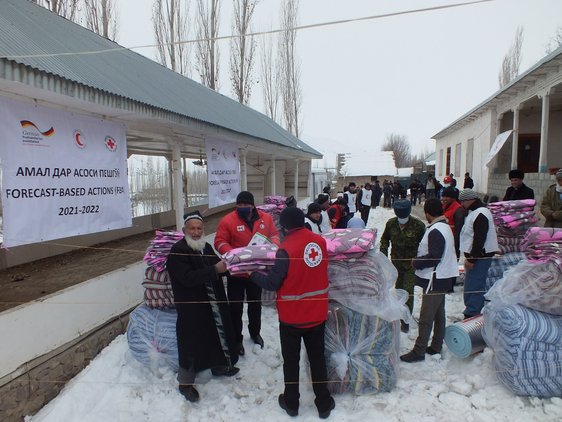
Source: GRC Tajikistan
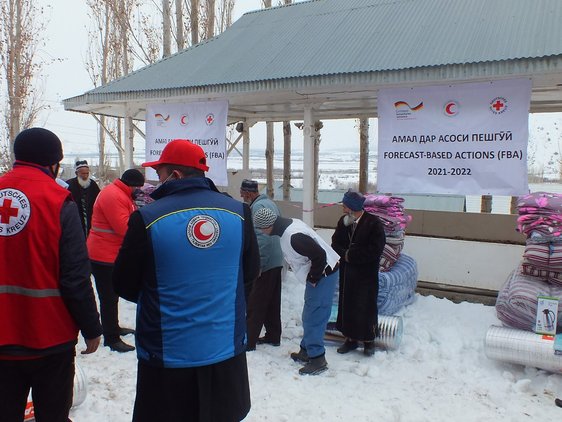
Source: GRC Tajikistan
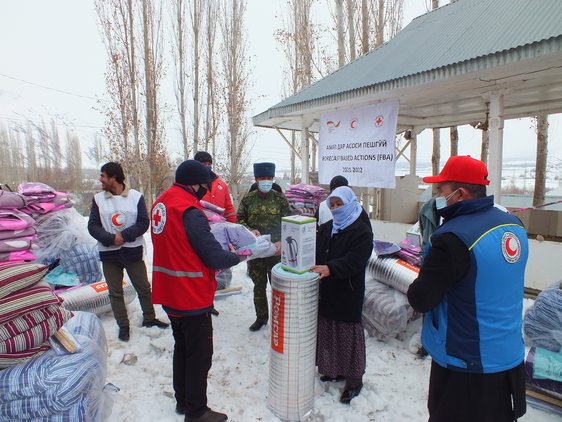
Source: GRC Tajikistan
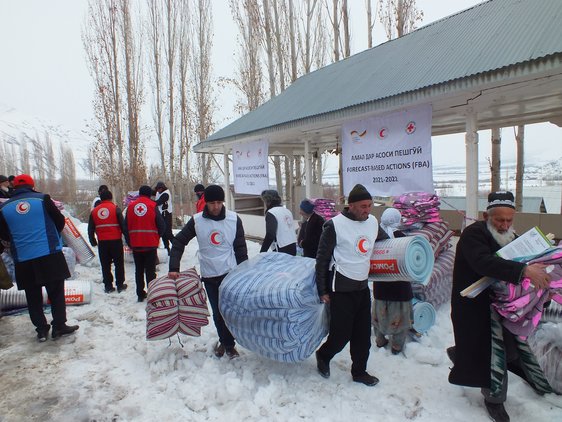
Source: GRC Tajikistan
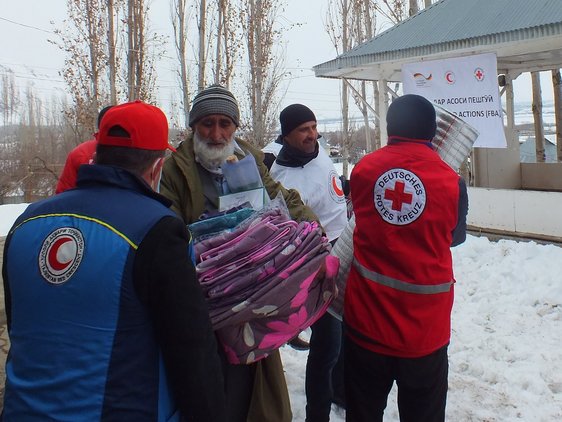
Source: GRC Tajikistan

Source: GRC Tajikistan
Source: GRC Tajikistan
Source: GRC Tajikistan
Source: GRC Tajikistan
Source: GRC Tajikistan
The dispatch of delivery trucks to the target communities in the northern region was postponed twice, and subsequently cancelled. This was due to a number of avalanches (approximately 15) which restricted access to the main road network. This issue, as well as the overall experience of conducting this test activation, will be used to further develop the Early Action Protocol for Cold Waves in Tajikistan.
According to the long-term forecast by Tajik Hydromet, further cold wave anomalies are expected in early February, with temperatures predicted to be a few degrees below average and accompanied by heavy snow and rain, along with severe gusts of wind.
Forecast-based financing (FbF) has established mechanisms to automatically allocate funding for early action once forecasts indicate a high probability of an extreme weather event. The goal of FbF is to anticipate disasters, and prevent and reduce their humanitarian impact. A key element is that the allocation of financial resources is agreed in advance, along with the specific forecast threshold that will trigger the release of those resources for the implementation of pre-defined early actions.
The roles and responsibilities of everyone involved in implementing these actions are defined in an early action protocol (EAP). The EAP for Cold Waves in Tajikistan is being developed in a joint effort by the Red Crescent Society of Tajikistan, the German Red Cross, the IFRC, the Red Cross Red Crescent Climate Centre and local authorities, such as the national disaster management authority and hydro-meteorological services.
The FbF project in Tajikistan and Kyrgyzstan was launched in 2019 and supports the development of EAPs for cold waves and heatwaves. It is funded by the Deutsche Bank Stiftung, with additional funds provided by the German Federal Foreign Office.
You can read more about forecast-based financing in Tajikistan here and Kyrgyzstan here.
